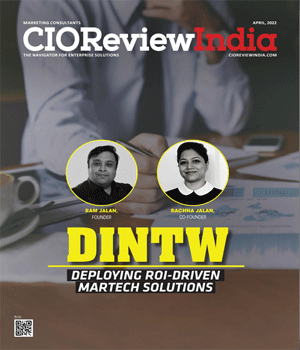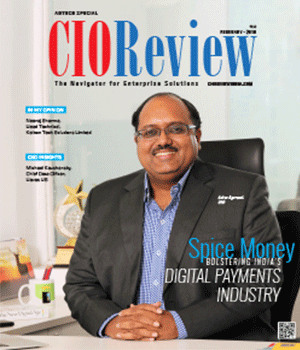
Digital Marketing In Banking, An Evolved Revolution
Prasanna Lohar, Head Technology - Innovation & Architecture, DCB Bank | Wednesday, 18 September 2019, 04:19 IST
 Digital Trends in Banking
Digital Trends in Banking
Banking has been undergoing liberalization policies and technological advancements in the last decade in India. And this is, without doubt, the digital era, and no industry can escape the ongoing and incoming digital trends that now influence all sectors of society.
On that note, here are the current digital marketing trends in banking that India can currently look out for and look forward to:
Internet banking is all the rage
Ever since Internet banking facilities were implemented, the number of users/customers availing this facility has been on the rise. Hence, not considering digital banking features as part of a bank’s marketing strategy is simply not feasible anymore.
Innovations are customer-oriented rather than product-oriented:
Innovations (like UPI, BHIM, Digital banking, Wallets etc) that focus on ease of access and use for the bank’s customers are the primary focus right now; everything else is secondary. Mobile banking, internet banking, SMS alerts, banking kiosks, 24/7 ATMs, & any other banking innovation that allows customers to access and make use of their banking without needing to directly visit a branch, are the kinds of innovations that banks currently need to focus on in order to attract and keep customers.
“New technologies and demographic shifts are forcing marketers to re-evaluate everything - from priorities and strategic plans to their institution's overall business model - putting marketing squarely in the spotlight”
It means that customers have as much independence and self-sufficiency as is securely possible without needing to rely on visiting a bank’s branch.
Risk management and cyber security are of prime importance:
With so many financial functions and transactions taking place in the virtual realm of the Internet & Mobile, banks are required to ensure that their servers are duly protected and that their customer data is painstakingly secured. In any case, the cyber security of banking websites and portals need to be armed with the latest and most secure cyber security apps and software.
Banks need to have a presence on social media:
Today, every business has a social media presence. And banks cannot escape this necessary marketing trend either. In fact, most of a bank’s youngest adult customers won’t even consider joining a bank if they can’t find good information and references about the bank on social media. Hence, social media marketing for banks is turning into a very dominant digital marketing trend. And it doesn’t look like it’s going to fade away any time soon.
Banking needs to be digitally interactive and a people-oriented business:
Banks that focus on propaganda messages and which are more profit-oriented, rather than customer-oriented, are not going to survive. Customers openly flock to banks that provide them with the best convenience and benefits. And, as banks are available in plenty now, banks need to keep up with the times and provide the same value-added services that their competitors do in order to keep up. Plus, banks need to have a solid presence in the World Wide Web. And they need to interact and engage with existing and potential customers a lot like how other kinds of businesses do online.
Mobile is the rising star:
Among all the current digital trends around the banking sector, the potential for mobile banking is the leading trend. After all, mobile users are only increasing in number. And so, being able to access and transact banking functions via mobile phones, and on a secure mobile-based online platform, is the main focus of banking innovations right now.
Big data should be a big deal:
Big data is already used in a number of industries to create better marketing strategies and to gain more customers. And as of now, banks would profit the most by dipping into the pool of big data. However, it isn’t enough that such relevant and pertinent data is just stored, it should be analyzed and used to redefine and refine the existing marketing strategy that banks are using.
Digital Marketing Strategies for Banks
The six tools we’re about to cover have been proven to work for banks all over the country in a range of different cities.
1. SEO: Search Engine Optimization (SEO) refers to a set of practices aimed at convincing search engines that your website deserves the top spot on their result pages for keywords relevant to what you offer. The more you invest in SEO, the more your website will climb the ranks in search engines and bring you a passive form of leads.
2. Pay-Per-Click Advertising: Now, despite your best SEO efforts, you may find that the first page of Google is just too competitive for the search terms you want.
One way around this problem is pay-per-click (PPC) advertising. This means ad space you only pay for when someone clicks on the ad.
3. Geofencing and IP Targeting: IP targeting means placing your ads only in front of users with certain IP addresses. You can use IP targeting to focus on users of an entire office building all the way down to an individual suite number.
Geofencing is similar but generally involves a larger area. With geofencing, you can establish a geographic boundary for your ads so that they engage consumers based on where they are physically in the world.
4. Content Marketing: Content marketing refers to using educational materials to stimulate interest in your product or service, though - and this is extremely important - not overtly advertising it.
Example: This could mean creating an eBook that teaches people how to go about obtaining a mortgage. You could also create regular blog posts that give free tips on how to save money. Videos are also a very effective form of content marketing.
5. Email Campaigns: Speaking of which, emails are hugely effective marketing tools because they get right in front of people you’ve already qualified as leads.
With an email drip campaign, you have a set list of messages already written, which automatically go out - or drip - to a recipient once they’ve completed a given action.
The idea is that, slowly but surely, you use emails to turn recipients into customers.
6. Social Media: Social media marketing continues to prove effective across all different industries and, therefore, definitely deserves consideration for your marketing strategy for a bank or credit union.
While you could create an account for your bank on sites like Facebook or Twitter, you’ll see far better results if you use the PPC methods we mentioned earlier combined with - you guessed it - segmentation to target potential customers.
The Way Ahead
As you can see, digital marketing represents a number of powerful approaches that could greatly increase business for your bank. Despite how amazing these strategies are, the best part about all of them is that they give constant feedback.
Bank websites, Mobile Banking Apps could soon include as many, or more, non-banking services as banking ones - a mashup intended to leverage an entire ecosystem of intermediary customer services and Journey.
The rise of digital channels is radically transforming the role of the CMO. New technologies and demographic shifts are forcing marketers to re-evaluate everything - from priorities and strategic plans to their institution's overall business model - putting marketing squarely in the spotlight. In the digital era, banks are increasingly becoming marketplaces, and each prospective event is becoming a marketplace opportunity.
Well, in a nutshell, most digital marketing trends in the banking sector, in India currently revolves around social media, internet banking services, and the availability (and innovations) of mobile banking services. Digital security and working hand in hand with new banking technologies additionally constitute the current trends in the banking sector in India.
CIO Viewpoint
Marketing Tech - A CIO Perspective
By Satish Panchapakesan, Senior Vice President & CIO, Arvind Fashions
Blockchain Based Cybersecurity For IoT
By Arunmani Subramanian, VP - Emerging Technologies, YASH Technologies
Data Science & Machine Learning In Fintech
By Jainendra Kumar, Head - Global Delivery Center-India & Senior Director Product Development Software, Diebold NixDorf
CXO Insights
Cyber Security - A Perspective
By Manu Sharma, Director - Information Technology And Corporate Security, OnMobile Global Limited
How Low-Code Is Transforming The Future Of Work...
By Deepak Pargaonkar, VP - Solution Engineering, Salesforce
Incorporating Blockchain Capabilities into...



.jpg)









